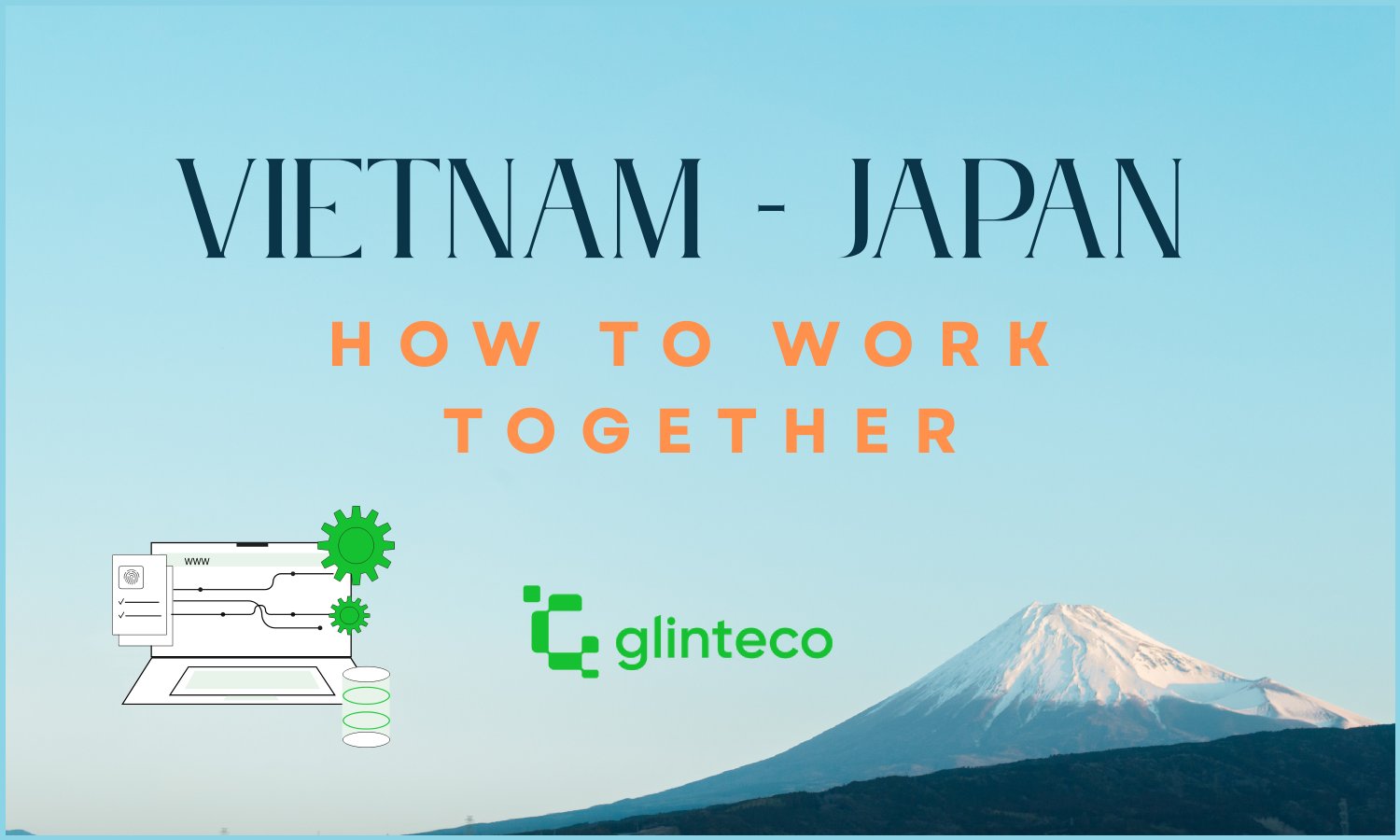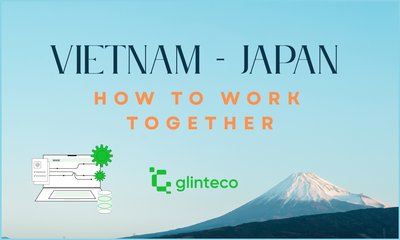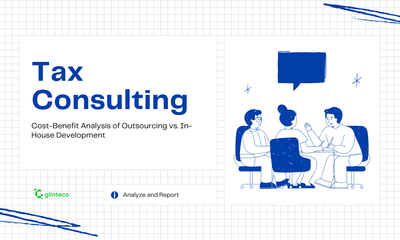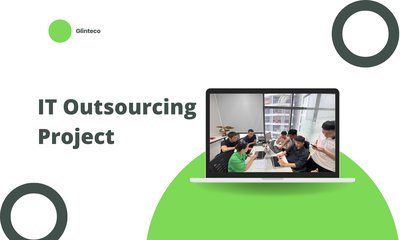日本からベトナムへのITサービスアウトソーシング
By JoeVu, at: 2024年10月27日10:42
Estimated Reading Time: __READING_TIME__ minutes


近年、ベトナムはITアウトソーシングの主要な目的地の一つとして台頭しています。高度なスキルを持つエンジニアの増加、競争力のある価格、そして文化的な近接性により、ITサポートを求める日本の企業にとって理想的な選択肢となっています。本ガイドでは、日本企業がベトナムへのITサービスアウトソーシングの全プロセスをスムーズに連携し、プロジェクトを成功させるための方法を説明します。
ステップ1:ITアウトソーシングの要件を定義する
潜在的なパートナーに連絡する前に、ビジネスニーズとプロジェクト要件を明確に定義しましょう。以下の点を考慮してください。
- プロジェクト範囲:プロジェクトの種類(Web開発、モバイルアプリ開発、ソフトウェア統合など)を定義します。
- タイムラインと予算:明確なタイムラインと予算を設定し、潜在的なアウトソーシングパートナーを絞り込みます。
- 技術仕様:必要な技術とフレームワークを特定します(例:Python、ReactJS、AI/ML開発)。
- サービスモデル:専任チーム、人員増強、またはプロジェクトベースのアウトソーシングのいずれが必要かを決定します。
これにより、潜在的なベンダーと効果的にコミュニケーションを取り、現実的な期待値を設定することができます。
ステップ2:潜在的なアウトソーシングパートナーを調査する
要件が定義されたら、ベトナムの潜在的なITアウトソーシング企業の調査を開始します。以下の基準を考慮してください。
- 専門知識と経験:あなたの業界または同様のプロジェクトに関する経験を持つ企業を探します。
- 技術力:企業があなたに必要な技術とツールに関する専門知識を持っていることを確認します。
- 顧客レビューと事例研究:ClutchやGoodFirmsなどのプラットフォームでレビューを確認し、あなたのプロジェクトに関連する事例研究を依頼します。
- 文化的適合性:日本のビジネス慣習に精通しており、日本の職場文化をよく理解しているパートナーを選択します。
Glintecoでは、例えば、カスタムWeb開発、自動化テスト、DevOps、AI統合/研究、税務統合を専門としており、グローバルクライアントとの豊富な実績があります。
ステップ3:連絡を取り、コミュニケーションを評価する
絞り込んだ潜在的なパートナーに連絡を取り、彼らの応答時間とコミュニケーションスタイルを評価します。信頼できるコミュニケーションチャネルを確立することは、プロジェクトの成功に不可欠です。最初の議論では:
- プロジェクトの概要を共有する:簡潔なプロジェクト概要を提供し、フィードバックと最初のアイデアを求めます。
- プロセスとワークフローについて質問する:彼らのプロジェクト管理方法論(例:アジャイル、スクラム)について学び、彼らのアプローチがあなたの期待と合致することを確認します。
- 英語/日本語の能力を評価する:言語能力は非常に重要です。必要に応じてバイリンガルのサポートを提供できるかどうかを確認してください。
ステップ4:提案書を確認し、評価基準を設定する
選択した企業から詳細な提案書を要求し、以下の基準に基づいて評価します。
- 価格と支払い条件:時間単価、固定費用、および支払いのマイルストーンを比較します。
- 技術アプローチ:提案された技術ソリューションとその実現可能性を評価します。
- プロジェクト管理:パートナーがJira、Trello、またはAsanaなどの堅牢なプロジェクト管理ツールを使用していることを確認します。
- リスク管理:潜在的なリスク(納期遅延や技術的なボトルネックなど)がどのように管理されるかを特定します。
これらの基準に基づいて提案を採点し、ランク付けする評価マトリックスを作成します。

ステップ5:デューデリジェンスを実施する
パートナーを決定する前に、徹底的なデューデリジェンスを実施します。これには以下が含まれます。
- バックグラウンドチェック:会社の資格、チームの資格、および認定を確認します。
- 参照チェック:参照を要求し、以前のクライアントと話して彼らの経験を理解します。
- トライアルプロジェクト(オプション):小規模なテストプロジェクトを実施して、彼らの技術力とコミュニケーションスキルを評価することを検討します。
ステップ6:明確な契約を交渉し、締結する
パートナーを選択したら、しっかりとした合意が締結されていることを確認します。契約には以下が含まれる必要があります。
- 業務範囲:タスク、成果物、および期待される成果を明確に定義します。
- 知的財産権:開発されたソフトウェアまたは製品のIP権を誰が所有するかを指定します。
- 機密性とセキュリティ:データ保護対策と機密保持契約を概説します。
- 支払い条件とマイルストーン:詳細な支払い条件、プロジェクトのマイルストーン、および遅延に対するペナルティを含めます。
- コミュニケーションプロトコル:コミュニケーションの頻度、報告方法、およびエスカレーションポイントを指定します。
これにより、当事者双方を保護し、エンゲージメントに専門的なトーンを設定します。Dropboxには契約締結機能がありますこれは両当事者にとって非常に便利です。
ステップ7:スムーズなオンボーディングプロセスを確立する
契約が締結されたら、構造化されたオンボーディングプランを作成します。これには以下が含まれます。
- 主要な関係者への紹介:ベトナムのチームを主要な関係者に紹介し、役割と責任を明確に設定します。
- キックオフミーティング:プロジェクトの詳細、タイムライン、および期待事項を確認するための包括的なキックオフミーティングを実施します。
- ツールの設定とトレーニング:必要なツール(例:コードリポジトリ、コミュニケーションプラットフォーム)が設定され、チームが使用する独自のシステムに精通していることを確認します。
ステップ8:効果的なプロジェクト管理とコミュニケーションを実施する
定期的なコミュニケーションとプロジェクトの監視は、アウトソーシングの成功に不可欠です。以下のベストプラクティスを使用してください。
- 毎週または隔週のミーティング:定期的なミーティングを設定して、進捗状況を追跡し、問題に対処し、必要に応じてプロジェクトの目標を再調整します。
- プロジェクト管理ツール:Slack、Microsoft Teams、またはBasecampなどのツールをリアルタイムのコラボレーションに使用します。
- 言語と文化への配慮:文化の違いとコミュニケーションスタイルを意識し、理解とエンゲージメントに影響を与える可能性があります。
Glintecoでは、透明性のあるコミュニケーション、定期的な更新、およびフィードバックへの迅速な対応を重視しており、信頼関係の構築とプロジェクトの円滑な完了を支援します。
ステップ9:監視、レビュー、最適化
プロジェクトが開始されたら、成果物とパフォーマンスを定期的にレビューします。
- KPIの追跡:成果物の品質、期限の遵守、および予算の遵守などの主要なパフォーマンス指標を監視します。
- レトロスペクティブの実施:各フェーズの後、レトロスペクティブを実施して改善点を特定し、得られた教訓を次のフェーズに適用します。
- ワークフローの最適化:生産性とコラボレーションを向上させるために、必要に応じてワークフロー、ツール、またはリソースを調整します。
ステップ10:長期的なパートナーシップを構築する
最初のプロジェクトが成功したら、長期的なパートナーシップを検討してください。以下を行うことができます。
- 範囲を拡大する:既存のシステムへの新しいプロジェクトまたは機能強化について話し合います。
- 専任チームを開発する:ベトナムのチームがあなたのプロジェクトに専念して作業する専任チームモデルを構築します。
- 継続的な改善を促進する:長期的な成功を確保するために、ベトナムのチームのトレーニングとスキル開発に投資します。
結論
日本からベトナムへのITサービスアウトソーシングは、適切に行えばゲームチェンジャーになる可能性があります。これらの手順に従うことで、日本企業はリスクを最小限に抑え、プロジェクトの成果を最適化し、ベトナムが提供する技術力とコストメリットを活用できます。アジャイル手法を採用することで、より構造化されながらも柔軟性のあるアプローチを実現できます。
日本の企業にとってのアジャイルの利点:
- 変化への迅速な適応:アジャイルの反復的なアプローチにより、チームは変化する要件と市場の需要に適応し、プロジェクトの関連性を維持できます。
- コラボレーションの向上:アジャイルはオープンなコミュニケーションとチームワークを促進し、サイロを減らし、クロスファンクショナルな連携を改善します。
- 継続的なデリバリー:アジャイルは漸進的な改善に焦点を当てているため、成果物が着実に流れ込み、プロジェクトの遅延リスクが軽減されます。
- 透明性の向上:定期的な更新とフィードバックループにより、誰もが情報を得ることができ、より良い意思決定とプロジェクトの可視性が向上します。
Glintecoがアジャイルを使用して日本の企業をサポートする方法
Glintecoでは、専門知識とアジャイル手法を組み合わせることで、日本の企業のニーズに合わせた柔軟なプロジェクト環境を作り出しています。アジャイルを採用することで、チームはワークフローを近代化し、階層的な障壁を打破し、継続的な改善の文化を取り入れることができます。これにより、高品質な結果、迅速なデリバリー、およびグローバルトレンドとのより高い整合性が実現します。
Glintecoにご連絡ください。
アジャイルの力を通じて、ビジネスを変革し、成功を収めるために、共に取り組みましょう!





